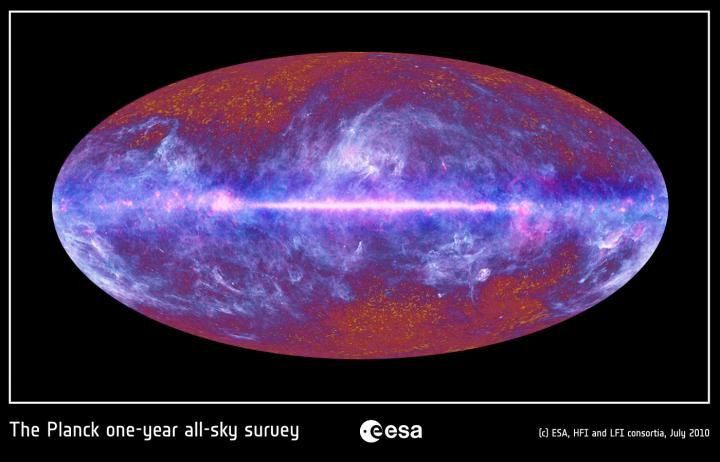Light Energy Map Of Milky Way Also Shows Gamma-Ray Production Mechanism

We have our first map of the distribution of all the light energy within our home galaxy, the Milky Way, a map that accounts for visible, ultraviolet and infrared radiations. It was created by a team of astrophysicists from Germany, Romania and the United Kingdom who used a new method to track all the photons in the galaxy.
Researchers from the University of Central Lancashire (UCLan) in the U.K., the Max Planck Institute for Nuclear Physics (MPINP) in Heidelberg, Germany, and the Astronomical Institute of the Romanian Academy used computer models and calculations to track all sorts of stellar photons — including those emitted as heat radiation by interstellar dust — in the Milky Way. This was a different approach than the traditional one that looked at the distribution of stars as an analogue for the way light was spread across the galaxy.
Read: The Fastest-Moving Stars In The Milky Way Are Actually Outsiders
This approach also allowed the researchers to predict the paths the photons will take, allowing them to model the distribution of light energy throughout the galaxy. And this map will allow astronomers to better understand our own galaxy, as well as the process behind the formation of stars in spiral galaxies.
Cristina Popescu from the UCLan, who was lead author of a study published in the journal Monthly Notices of the Royal Astronomical Society, said in a statement Thursday: “We have not only determined the distribution of light energy in the Milky Way, but also made predictions for the stellar and interstellar dust content of the Milky Way.”
Another potential interesting outcome of this study is it could take us closer to knowing the source of cosmic rays, the mysterious high-energy radiation that is made up of high-energy protons and electrons. Researchers found that stellar photons in the Milky Way interact with cosmic radiation to produce gamma-rays, which are made up of the highest-energy photons in the universe.
Cosmic rays are interesting to science because they control the formation of planets and stars, and cause chemical reactions in space that ultimately create complex molecules that could be critical to life as we know it.
Richard Tuffs from MPINP said in the statement: “Working backwards through the chain of interactions and propagations, one can work out the original source of the cosmic rays.”
Read: Most Of Milky Way’s Antimatter A Result Of Weak Supernova Explosions
The study also considers how the interaction between photons of gamma-rays and those of the interstellar radiation fields reduce the intensity of the gamma-rays.
The basis of the model used by the researchers had been previously used by Popescu and Tuffs to map the “panchromatic spectral energy distributions of star-forming galaxies in the nearby universe.” But adapting that model to study the Milky Way, with the observer being on the inside, wasn’t easy, as Tuffs pointed out.
“It has to be noted that looking at galaxies from outside is a much easier task than looking from inside, as in the case of our galaxy,” he said.
© Copyright IBTimes 2024. All rights reserved.





















